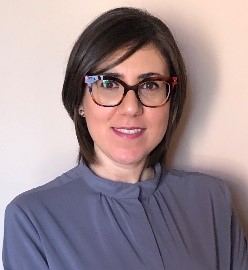Advances in the Development of Cutting-Edge Drug Delivery Systems for the Effective Treatment of Chronic Skin Wounds, 2nd Edition
A special issue of Pharmaceutics (ISSN 1999-4923). This special issue belongs to the section "Drug Delivery and Controlled Release".
Deadline for manuscript submissions: 20 June 2024 | Viewed by 2541
Special Issue Editors
Interests: hydrogels; physical and chemical hydrogels; drug delivery; tissue engineering; polymer synthesis; polymeric scaffolds
Special Issues, Collections and Topics in MDPI journals
Interests: biomaterial design; polyurethane synthesis; bioprinting; wound healing; drug delivery systems; multi-stimuli-responsive polymers; bioink design; cell culture; tissue modeling; inflammation modelling; hydrogels
Special Issues, Collections and Topics in MDPI journals
Special Issue Information
Dear Colleagues,
Hard-to-close wounds represent a huge burden on both society and healthcare systems, and their impact is expected to progressively grow due to the aging population and increasing incidence of obesity. To tackle this critical issue, a great variety of wound dressings have been developed that aim to locally release therapeutic agents, promptly address infections, and provide a proper wound environment to enhance tissue healing. Advancements in biomaterial design, diagnostic imaging, and material processing techniques have significantly supported the research on smart and innovative platforms. However, the ideal wound dressing still does not exist.
Therefore, this Special Issue aims at critically discussing the state of the art of wound dressings and highlighting future directions for the development of advanced systems to treat chronic skin wounds. We welcome the submission of original research articles and short communications, as well as reviews, mini-reviews, and systematic review articles. Special attention will be devoted to works dealing with the design of innovative drug delivery carriers (e.g., nanoparticles, hydrogels, membranes, scaffolds), smart patches, wound-responsive systems, drug-releasing bioinks, antimicrobial materials, and antibiotic-free treatments.
Dr. Monica Boffito
Dr. Rossella Laurano
Guest Editors
Manuscript Submission Information
Manuscripts should be submitted online at www.mdpi.com by registering and logging in to this website. Once you are registered, click here to go to the submission form. Manuscripts can be submitted until the deadline. All submissions that pass pre-check are peer-reviewed. Accepted papers will be published continuously in the journal (as soon as accepted) and will be listed together on the special issue website. Research articles, review articles as well as short communications are invited. For planned papers, a title and short abstract (about 100 words) can be sent to the Editorial Office for announcement on this website.
Submitted manuscripts should not have been published previously, nor be under consideration for publication elsewhere (except conference proceedings papers). All manuscripts are thoroughly refereed through a single-blind peer-review process. A guide for authors and other relevant information for submission of manuscripts is available on the Instructions for Authors page. Pharmaceutics is an international peer-reviewed open access monthly journal published by MDPI.
Please visit the Instructions for Authors page before submitting a manuscript. The Article Processing Charge (APC) for publication in this open access journal is 2900 CHF (Swiss Francs). Submitted papers should be well formatted and use good English. Authors may use MDPI's English editing service prior to publication or during author revisions.
Keywords
- wound healing
- hard-to-close skin wounds
- biofilm
- infected wounds
- drug delivery systems
- controlled drug release
- stimuli-responsive hydrogels
- biomaterials
- antimicrobial materials
- 3D bioprinted wound dressings
- nanofibrous membranes
- personalized wound dressings
- tissue engineering
- antibiotic-free treatments
- nanoparticles







